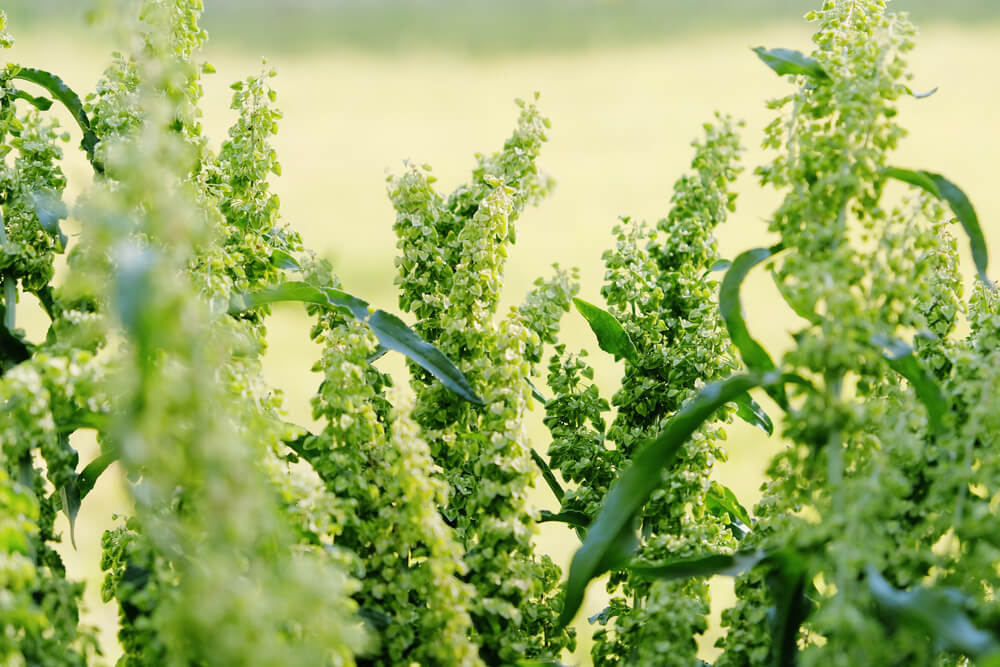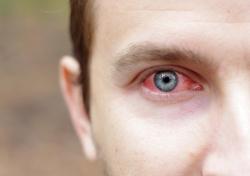Hay fever is also known as seasonal allergic conjunctivitis, or allergic rhinitis and is an allergy causing the body to overreact to airborne particles released by plants, the symptoms can range from mild to severe and include:
- Itching
- Watery or mucus discharge from the eyes and/or nose
- Burning sensation
- Red eyes
- Runny nose
- Sore throat
- Sneezing
There are two main classifications of hay fever:
- Seasonal Allergic Conjunctivitis
This is the most common and occurs during the spring (grass pollen-induced), or in the late summer months (ragweed pollen-induced) - Perennial Allergic
Conjunctivitis is a year-round allergic condition. This allergic response is often related to animal dander, dust (including carpet dust), or other allergens that are present in the environment all year round. Symptoms are similar to seasonal allergic conjunctivitis, however, they often tend to be milder.
These two allergies affect people more than all other types of ocular allergies and can cause considerable discomfort. People with asthma may find that seasonal allergies can trigger their condition.
What Is Hay fever?
Hay fever is an allergic reaction to pollen. When pollen comes into contact with your eyes, mouth, or nose the body reacts as though it were a dangerous threat to its biological systems, even if there isn't any actual danger.
The immune system releases histamines that are designed to fight off invading bodies, such as bacteria, viruses, fungal spores, and even pollen. These chemicals are designed to pump increased levels of blood to specific areas of the body, such as the eyes, nose, and throat, where most invaders enter the body. In an effort to flush out the foreign invaders, the body increases tear and mucus production, and an increased sneeze reflex is triggered.
With roughly 10 million people suffering from hay fever in England alone, hay fever is undoubtedly one of the most common allergies in the UK. Doctors at London’s Royal National Throat, Nose, and Ear Hospital estimate that roughly 1 in 4 UK residents suffers from a bout of hay fever at some point in their lives.
What Are The Common Causes Of Hay Fever?
It may be surprising, but grasses are the most common cause of hay fever. However, Ragweed is a main cause of weed allergies. Other common sources of weed pollen include lamb’s quarters, pigweed, sagebrush, and tumbleweed. Certain species of tree pollen can also cause hay fever reactions, including birch, cedar, and oak.
Plants fertilized by insects, like roses and some flowering trees, like cherry and pear trees, usually do not cause allergic rhinitis.

Weed Pollen
Grasses are the most likely culprit of seasonal hay fever, however, weed pollen is also to blame, and weeds such as Dock, Mugwort, Nettle, Oilseed and Plantain weeds create the most hay fever in the UK. Mugwort is a very persistent and hardy perennial plant, it is native to Europe and Asia and is a member of the Asteraceae family, which includes daisies, sunflowers, dandelions, and ragweed. Growing up to 1.8 meters in height, and appearing reddish-brown in colour, mugwort is usually found near streams, on rocky soil, and in rough terrain, its pollen is very allergenic, and the most common cause of hay fever. The pollen can travel up to 2,000 meters floating in the air.
Grass Pollen
Grass pollen is recognised as one of the main causes of hay fever, the two main culprits are
- Perennial Rye
Also known as English Ryegrass, this grass is found throughout Britain. This grass was once exclusively cultivated for agricultural purposes and is now found growing wild along roadways, most likely due to seed being spread during transportation. Perennial Rye is a harsh, coarse grass with green stems and thin, blade-like leaves. - Timothy Grass
Also called cat's tail grass, it is an abundant perennial grass native to Europe, although it is rare in areas near the Mediterranean. It has wide, flat leaves and grows to more than a meter in height. The easily recognizable flower head is up to 140 centimeters long and purple or brown in colour.
Tree Pollen
About 20% - 25% of people are allergic to one or more types of tree pollen. If your hay fever kicks in during March or April, you could be allergic to tree pollen. You are most likely to be allergic to the pollen of Oak, Ash, Cedar, Birch, Hazel, Alder, and Horse Chestnut trees. Other trees that produce pollen that you may be allergic to include Elm, Yew, Willow, Poplar, Plane, Pine, and Lime trees.
When Am I Most Likely To Suffer From Hay Fever?
Seasonal allergies are referred to as such because they are triggered in different seasons. The time of year, time of day, and weather conditions play a role in how much pollen is in the air.
Weather And Time Of Day:
- Rainy days - The amount of pollen in the atmosphere drops
- Sunny days - The pollen count is highest in the evening.
- Windy days - Pollen is spread over greater distances
- Warm days - Flowers open and more pollen spreads
- High humidity - There is more pollen in the air.
Many local weather stations also provide current pollen forecasts based on current weather conditions. Check out the daily pollen count in your area at the Met Office.
Pollen Seasons:
Allergy season can be broken down into three basic periods: spring, summer, and autumn. Below is a list of the plants that fall into those phases, the time of year they are most likely to bloom, and the time of their peak pollen production.
Grass
Pollen season for grass typically begins in early May and ends in the middle of September. The peak, however, is throughout June and July.
Trees
Tree pollen season varies greatly from tree to tree. Many people experience their first hay fever symptoms when the Birch trees peak in late March.
Weeds
Weed pollen season is throughout the year depending on the weed, but the biggest culprit is mugwort which peaks in late July and runs through the middle of August.

How Do You Prevent Hay Fever?
Although you cannot cure hay fever there are a few things you can do to prevent or reduce hay fever symptoms:
Do's
- Do put some Vaseline around your nostrils to trap pollen.
- Do take a shower and change your clothes after you have been outside.
- Do stay indoors and keep windows and doors shut as much as possible.
- Do wear wraparound sunglasses to prevent pollen from getting into your eyes.
- Do vacuum regularly with a HEPA (high-efficiency particulate air) filter and dust with a damp cloth.
- Do use a pollen filter for the air vents in your car
Don'ts
- Do not cut grass or walk on grass.
- Do not spend too much time outside.
- Do not keep fresh flowers in the house.
- Do not smoke or be around secondhand smoke – it can make symptoms worse.
- Do not dry clothes outside – they can collect pollen.
- Do not let pets into the house if possible – they can carry pollen indoors.
Treatments For Hay Fever
Relief from hay fever comes in many forms.
A desensitization process or prescribed allergy shots can all be helpful for some people in reducing symptoms. There are also various topical and oral medications readily available at local pharmacies. For particularly serious cases, a variety of prescription medications are available.
One of the most effective things you can do is to check with your doctor, allergist, or eye care professional they can help diagnose your condition and recommend the best treatment for you.
Do Antihistamines Provide Effective Relief From Hay Fever?
Most medications for hay fever fall into the antihistamine category, either topical or oral. Both work to block the release of histamine, which causes many of the symptoms.
Orally ingested antihistamines may partially relieve ocular symptoms. They can be a convenient way to obtain relief although it can often take an hour or more before they begin to work. Some oral antihistamines can produce unwanted side-effects such as drowsiness, irritability, and dry eyes. Oral antihistamines work best if taken before exposure to the allergen, but pollen release is dependent upon many seasonal and daily climatic factors that can't be accurately predicted.
Topical antihistamines in the form of eye drops, may prove the most effective way to get relief from Hay Fever. Unlike oral medications, eye drops allow the medication to get directly to the affected eyes. Many contain both an antihistamine and a decongestant. Applied when necessary, these drops can alleviate most of the annoying symptoms such as itching, redness, tearing, and swelling.
New and highly potent prescription topical antihistamines are also available from your doctor that work on contact and provide hours of relief with virtually no side effects.
Always check with your optometrist, prescribing doctor, or pharmacist if you can wear your contact lenses whilst using any prescribed or over-the-counter medication that is applied directly to the eyes.
Can I wear Contact Lenses If I Suffer From Hay Fever?
The good news is you can wear contact lenses when you have hay fever, Optometrists often recommend Daily disposable contact Lenses when hay fever strikes. The reason for this is that a new pair of lenses is used every day so there is less time for pollen to build up on the lens and cause an allergic reaction.

Unfortunately, pollen can easily attach itself to contact lenses and cause you many (literal) headaches during hay fever season. For this reason, you may find added relief by swapping to regular eyeglasses or wearing some form of eye protection over your contacts during the height of hay fever season.
It’s a good idea to closely watch the pollen levels on a day-to-day basis. If you see pollen levels are excessively high (especially over 50 grams per cubic meter), then it might be best to leave your contacts at home.
Author: John Dreyer Optometrist Bsc(Hons), MCOPTOM, DipCLP
Created: 19 Feb 2024, Last modified: 9 Dec 2025

